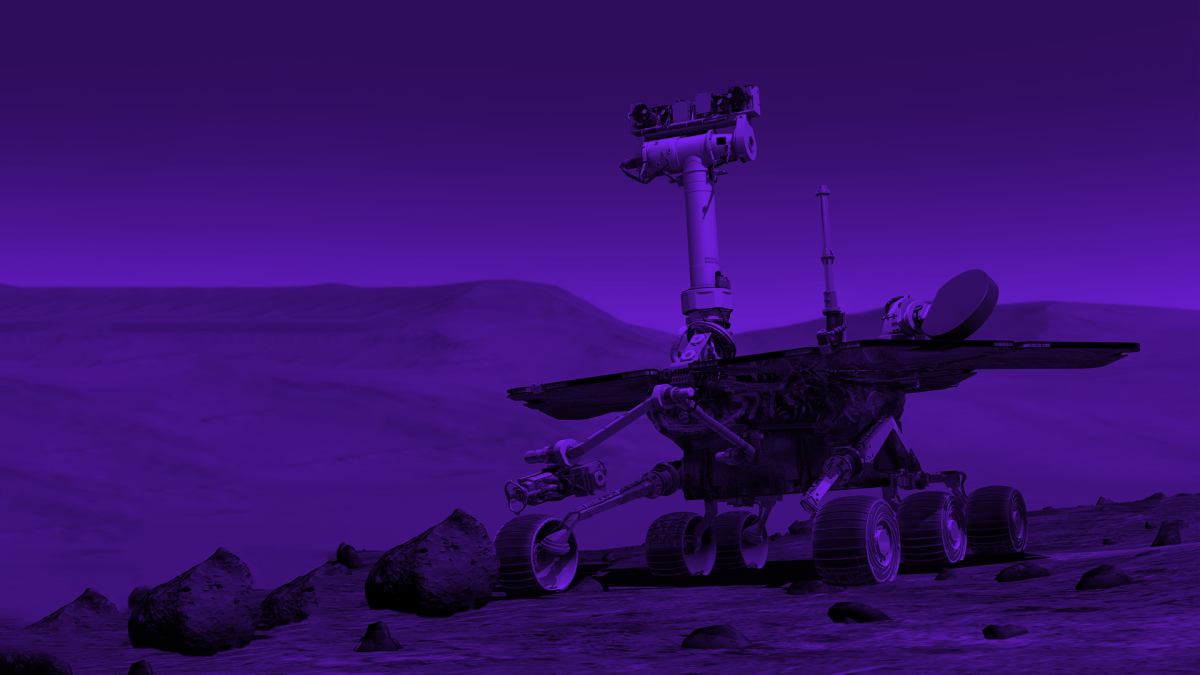- Sponsored
- Modernization
Enabling new air, space and satellite capabilities through the cloud

When the Department of Defense was tasked with creating the new U.S. Space Force, few people offered more experience to lead the planning and implementation effort than Maj. Gen. Clint Crosier, a 33-year Air Force veteran. Crosier had headed numerous high-profile assignments, including as director of Space and Intelligence Programs in the Office of the Under Secretary of Defense, and Chief of long-range strategic planning for the Air Force. Now he is taking that experience to AWS’s Aerospace and Satellite business.
Crosier has built a team of aerospace and satellite experts to bring the power of cloud computing to an industry that itself is undergoing its own revolution. In this exclusive interview, Crosier talks about how the aerospace and satellite industry is leveraging cloud computing, and how AWS is helping organizations get “to the stars, through the cloud.”
FedScoop: What are some of the broad challenges you’ve seen where the scale and power of cloud computing and analytics proved critical to advancing the mission?

Clint Crosier, Director, Aerospace and Satellite Solutions, AWS
Crosier: In my experience, teams often encounter some common challenges that can make it difficult to successfully complete their mission. In aerospace, these challenges or barriers might include anything from the upfront costs associated with building infrastructure, to the time and cost associated with engineering work, modeling, simulation, and testing for new satellites, launch vehicles, or designs.
As we look to the future, moving necessary processes like these to the cloud is going to be a game changer for defense as well as commercial aerospace applications because it has the potential to save significant time and expense. Digital engineering, digital testing, and digital modeling and simulation using the cloud will allow you to do all of this in a much more efficient way.
In the satellite industry, a huge challenge continues to be the ability to rapidly and reliably downlink, store and manage the vast amounts of data that operators are capturing every day. Consider that operators are capturing high-resolution satellite imagery that amounts to petabytes every single day. There is simply no way to analyze and share such massive volumes of raw data quickly and efficiently without the help of the cloud. And as satellite operators continue to grow their constellations, the amount of data will grow, too.
And then there are the challenges associated with space exploration. NASA JPL, for instance, is using the AWS cloud for mission-critical communication and transfer of telemetry data in support of its Perseverance rover mission on Mars. The Mars Rover team is receiving hundreds of images from Mars each day from a record number of cameras, resulting in thousands of images over Perseverance’s time on the planet. By using AWS, NASA JPL is able to process data from Mars, on Earth, faster than ever before. The increased processing speed is helping NASA JPL scientists to plan the rover’s next day activities. The increased efficiency will allow Mars 2020 to accomplish its ambitious goal of collecting more samples and driving longer distances during the prime mission, compared to previous rovers.
Simply put, the cloud is removing barriers that traditionally have held back the space industry and is helping to redefine the art of the possible.
FedScoop: There has been something of a renaissance in how the commercial aerospace industry has brought more affordable and technically advanced solutions to launching payloads, including satellites, into space. How are advances in cloud computing enabling those gains?
Crosier: We’re probably at the most exciting and significant inflection point in the space industry since the original Apollo days, back in the 1960s. Back then, the U.S. government would design, acquire, build, launch, operate and sustain all of its own systems. This was because one: nobody else in the world could do it. And two: security needed to be built in to protect those systems.
The industry growth that we are seeing today is creating enormous opportunities for companies of all sizes. AWS has extensive experience helping commercial and government customers and partners design satellites, and conduct space and launch operations. Our AWS Aerospace and Satellite team was established last year to directly support these customers and their long-term goals.
In order to support these customers and their space missions, we know that a flexible and secure cloud computing environment is essential. At AWS, security is a top priority and has been from day one. We did a lot of listening in the early days to really understand the challenges of our federal customers and show that we deliver security that is second to none. AWS has been a proven partner to the federal government for years, and government agencies trust us to handle their most sensitive workloads.
FedScoop: How do you see cloud computing playing a larger role in supporting space infrastructure and the growing mesh of satellites in orbit?
AWS Ground Station is a fully managed service that allows customers to downlink data and provide satellite commands across multiple regions with speed and agility — and at a low cost. AWS Ground Station customers can downlink data and provide satellite commands across multiple regions quickly, while paying only for the satellite time they use. We’ve found that companies can save up to 80% of their ground station infrastructure costs by using AWS Ground Station.
As the number of satellites in orbit continues to grow, operators will need to be able to increase the rates at which they deliver high-precision data to the people who need it most. The more we make cloud-based solutions available in near real-time, the more we will see companies develop new and exciting ways to use that data.
I think we will also continue to see the cloud playing a larger, more valuable role by supporting autonomous activities, allowing certain tasks to be done without a human in the loop. Artificial intelligence and machine learning can help to automate many tasks including data analysis, space traffic management and collision avoidance. With so many satellites in orbit, automating capabilities like these and delivering results to end users more rapidly are things that can only be done using the cloud.
FedScoop: Moving a bit back down to Earth, how do you see cloud computing playing a larger role in suborbital space?
Crosier: That’s a great question. People talk about the air domain and the space domain as though they’re interconnected; that it’s a singular domain where you just move from one to the other. But it’s not easy. We in the space industry are always cognizant that they behave in two very different ways. However, we have to transit between those domains interchangeably. For instance, we have aerospace operations — drones, doing intelligence in different parts of the world — that are taking their cues and information from satellites in space.
Boom Supersonic is a wonderful example. Boom is developing a new generation of supersonic aircraft and is using the cloud to perform digital design and engineering, stress tests, high-performance compute modeling and simulation. They estimate achieving a six-times increase in productivity operating on the AWS cloud versus running these simulations in an on-premises environment.
Here’s the amazing piece: Boom tells us that they have consumed 53 million compute hours on the AWS cloud; and they will double that over the next two years, in order to complete design and testing of their aircraft design. Boom is demonstrating how you can build an aircraft entirely on the cloud. It’s just a powerful example of where the aerospace industry can really benefit.
FedScoop: Looking ahead, what’s on your radar that excites you most about how the public is likely to benefit from these cloud-enabled advances in the aerospace industry? And what’s perhaps the biggest challenge you see?
Crosier: We see a number of exciting things that our customers are doing to advance the global good that really can only be executed on the cloud – like environmental protection, climate change monitoring, or disaster response activity. I’ll give you two examples.
Fireball International, one of our customers located in Australia, is using space data in the infrared spectrum to monitor and detect new wildfire breakouts within three minutes of ignition. Being able to respond in this way can only be achieved by using AWS cloud capabilities and our global infrastructure.
Another example is a company called Digital Earth Africa. They use high resolution imagery from space to focus relief efforts on the continent of Africa. There are ways you can detect what’s happening in patterns of life from space, such as where crops are not getting enough water and where there’s the risk of famine. They estimate that as satellite resolution improves, they’ll also be able to improve decision-level intelligence 800 times faster than what they could achieve before they moved to the cloud.
Exciting capabilities like these are possible because of the global infrastructure that AWS provides, coupled with the ability of the cloud to process large data sets more quickly and efficiently. I believe the cloud will become an indispensable foundation to the aerospace industry. Government and commercial customers alike will only stay competitive and relevant if they operate in the cloud.
Watch this story featuring Major General Crosier and Astronaut Peggy Whitson on how AWS is helping astronauts, scientists and everyday heroes make the future of space a reality.
Read more insights from AWS leaders on how agencies are using the power of the cloud to innovate.
This article was produced by FedScoop and underwritten by AWS.

This story was featured in FedScoop Special Report: How AWS Helps Government Innovate - Presented by AWS






